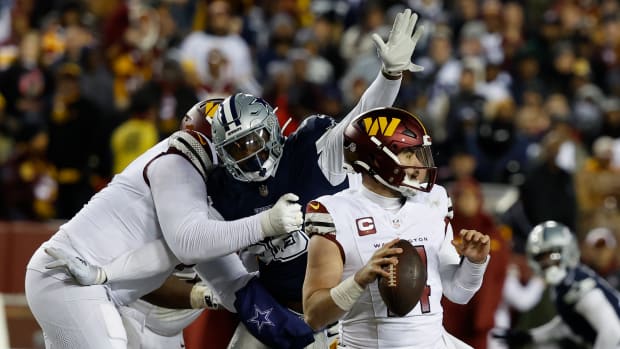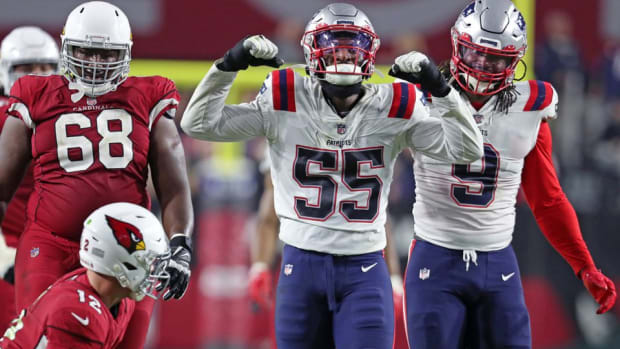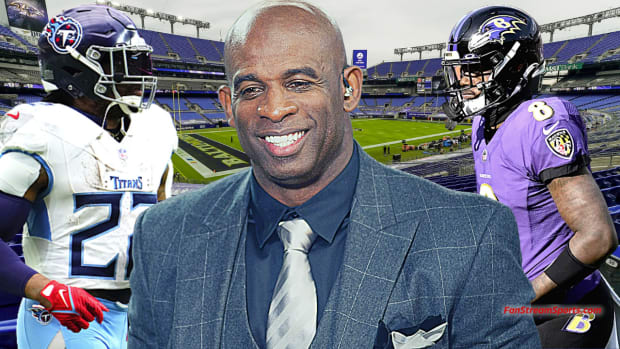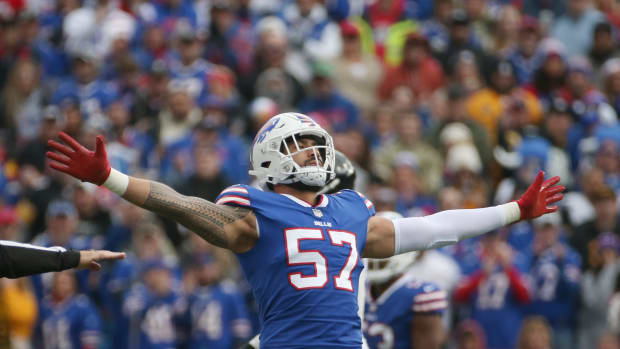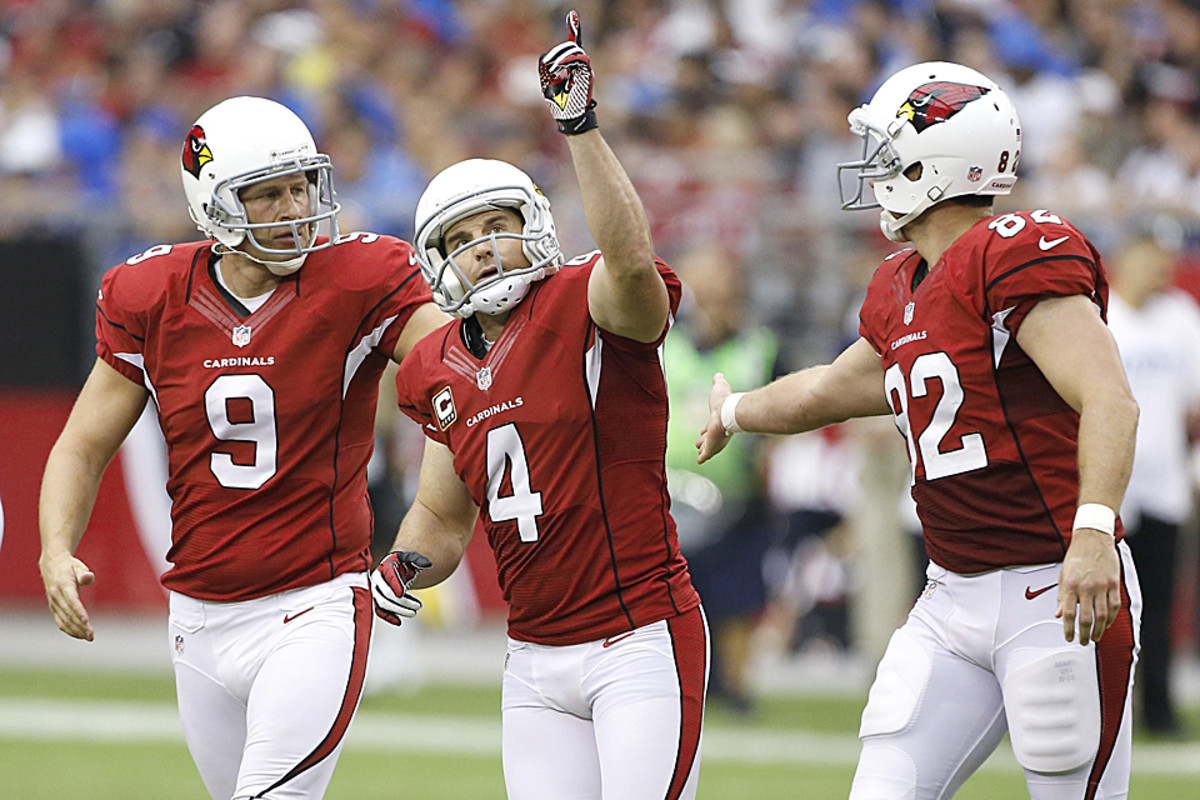
A Point to Make
By Jay Feely
If a tree falls in a forest and no one is around to hear it, does it make a sound? That old philosophical question could aptly be applied to the extra point for most of my 13-year career as an NFL placekicker. No one even thought about extra points except in the very rare instance that one was missed.
That all changed last January. In an interview with Rich Eisen, NFL commissioner Roger Goodell brought to light discussions the league was having behind closed doors about changing or eliminating the extra point. “The extra point is almost automatic,” Goodell said. “I believe we had five missed extra points this year out of 1,200 [actually 1,267]. So it’s a small fraction of the play and you want to add excitement with every play.”
With that, a national debate about the fate of the extra point was launched. I could point out that the quarterback spike is a boring play, as is the kneel down at the end of a game, but a better analogy might be the intentional walk in baseball. Certain plays, boring as they may be, are part of the fabric of the game and without a compelling reason should neither be abandoned nor changed. I have yet to hear that compelling reason when it comes to the extra point.
I can however, give you a compelling reason not to change the extra point: increased injuries.
Over the past few years there have been many changes to the game we love: how we tackle and block, how we practice during the season and during training camp, the kickoff reverting back to the 35-yard-line to encourage more touchbacks and reduce the number of returns. Every one of these changes was made to ensure the safety of players and reduce injuries. Changing the extra point runs counterintuitive to that philosophy. The extra point is virtually automatic. Because of that coaches rarely rush, preferring to protect against a two-point conversion with a more conservative defensive front. On field goals this isn't the case. The ability to block a kick or get enough pressure to force a miss provides the carrot for more aggressive schemes and greater effort from players.
The Denver Broncos kicked 75 extra points during the 2013 regular season. If the extra point is lengthened (as was the case for the first two weeks of this preseason), that is 75 more plays on which there is an increased risk of injury. Field goals are a low-reward, high-risk endeavor for an offensive lineman. They are placed in precarious positions with their knees, backs, necks, groins and heads vulnerable as a result of the required technique. They are sitting ducks for the aggressive rushes of defenders who may want to take out their frustrations, and injuries are not uncommon. Ask any lineman and they will describe the difference between a PAT rush and a field-goal rush. They can recount the times they were hurt or very nearly injured blocking for field goals.
I asked two of our Cardinals linemen about it.
“There is no question the defense rushes harder on field goals compared to extra points,” left tackle Jared Veldheer said “That’s where I feel like my head and neck are most exposed.”
Tackle Max Starks told me: “I injured my neck blocking for a field goal and had fusion surgery. On extra points they may rush hard one out of every five times. But on a field goal they are coming hard on every play. The 33-yard extra point is really just another field goal for us.”
Earlier this year, Peter King and Robert Klemko debated what to do about the PAT
Are we really going to change a play because it’s “boring,” exposing offensive linemen to 75 more plays during which their knee may get blown out or they may suffer a concussion? Will fans of a playoff contender be “entertained’’ by a longer extra point when their left tackle is lost for the playoffs? Do we really want a team to miss the playoffs because a kicker misses a 33-yard extra point in cold, windy Chicago or Pittsburgh in Week 17? What do you think fans would rather have decide the outcome of a game: a missed 33-yard extra point, or the overtime that follows a made 20-yarder? These are the very real implications of a potential rule change that I find misguided.
In Week 1 of the preseason, two extra points were missed. Does this constitute a successful rule change? Since 1999 NFL kickers are 90% from the 33-yard line compared to 99% from the normal extra-point distance of 20 yards. Certainly there will be a few more missed extra points, but what does this rule change really accomplish?
It’s ironic that the proponents of this rule change are the same ones who, a few years ago, were advocating changes to overtime rules because they placed the fate of a team disproportionately on the foot of its kicker. When NFL kickers voiced our opposition to the extra point change—which we have uniformly—we were dismissed as not wanting to make our jobs harder. But we voiced our displeasure with the kickoff change in 2011 even though that change made our jobs easier.
In this case, it is more likely that those most intimate with a kicker’s job understand the intricacies of extra points and field goals and see the bigger picture. The risks involved for those blocking on longer attempts outweigh the benefit of a more challenging kick.
We asked readers to weigh in with their ideas through email and Twitter. Here are the best responses...
I'm an American now living in New Zealand and get a kick out of rugby. Why not try the rugby routine? When a "try" is scored in rugby, the conversion kick takes place in line with where the try was scored. So a corner fade route touchdown would warrant an extra point from a difficult angle, whereas a burst up the middle would warrant an easy, straight-on kick. This addresses the "automatic" nature of extra points and adds another element to scoring touchdowns as position can be crucial.
—Steve Wakeman, Golden Bay, New Zealand
Why not make the PAT kick a one- or two-point option? Place the ball on the 15- or 20-yard line for one, or have the option of kicking it from the 30 or 35 for two. It still makes the play a kick, but it's no gimmee for two points. At least it would add some drama, especially if a blocked PAT is a live ball and can be advanced by the defense in lieu of a kick-off. In essence, the PAT is like a fourth down. This could reduce the number of kick-offs (concussion issue) as well. If a PAT is good, then just kick off.
—Michael, L.A.
Make the person who scores the TD kick the extra point.
—Greg Maxwell
Rugby rules create some interesting angles on conversion tries. (Harry Engels/Getty Images)
Heck, if we're going to change the PAT rules, let's have some fun with it. Here's my proposal:
Move the one-point PAT kick to the 20-yard line.
Allow a two-point conversion conversion try from the 5-yard line.
Allow three-point conversion try from the 20-yard line.
This way, teams can still line up for the one-point PAT, but convert a fake for three points. Also, if teams can convert the two-point conversion more than 50% of the time, they might forgo the PAT kick more often. The idea of simply moving the PAT farther back results is increasing the value of kickers. This proposal may result in no change or even decrease their value.
—Ryan Lennon, Rochester, Minn.
Make a drop kick from the 2 yard line worth two points. That'll add some intrigue.
—Matt Macdonald (@Omahamacdonald)
The good thing about extra points is that you can use them to strategize your bathroom breaks at the game. After a team scores a TD you make your way to the bathroom. By the time the extra point team lines up, kicks the ball and then the network goes to commercial you are firmly in the bathroom line. If you get in line early enough you should have handled your business or close to it by the time the commercial break is over. Once back from commercial there is the kickoff, which half the time is a touchback so you aren't missing anything there. Then after the kickoff, half the time there is a commercial again. So between the extra point and the time the other team starts its actual possession you have maybe four to six minutes of dead time to go to the bathroom.
—Ryan Knee, Seattle
If they get rid of the extra point (& the kickoff as they've talked about in the past), there will be no more "foot" in football.
—Kim Flores (@KimmeeCee)
I disagree that an extra point is a waste of time. To me, that 45 seconds is time to cheer on my team after the touchdown and watch the replay a few times before they cut to commercial. I would hate to see it eliminated. And I don't want to see games decided by a missed extra point, so I just assume they leave it where it is.
—Phil Hoffman
As impractical as it may be, having the goal posts move side to side would be really interesting to watch.
—Ian Stallins, California
We want to make it interesting? We want to introduce uncertainty? We want to get back to the original concept, which wasn't an automatic seventh point on every touchdown? Here is a thought: require all extra point tries to be attempted with only the personnel on the field when the touchdown was scored. No substitutions, offense or defense. We might see drop kicks come back. We might see more two-point attempts. We might see different strategic personnel groupings in the red zone (though I doubt this—it's hard enough to score a TD). We won't see kickers lose their jobs, because field goals are still so incredibly important in close games. Where's the drawback? I know. It'll never happen. But wouldn't it be fun?
—Rob
If you have to change the PAT at all (I'm in favor of just leaving it as is) why not just move it over to the hashmark?
—Kent
If you snap it from the 2-yard line (19-yard try), you get one point and kick off from the 20. If you snap it from the 25-yard line (42-yard try) you get two points and kick off from the 30
—Nathan Gedge
There is only one solution:
Score a TD, get seven points, no kicking needed.
Conversion try successful, get one point.
Conversion try unsuccessful, lose one point.
Anything that puts more emphasis on kickers is BAD for the NFL.
—Mark Zinno
Don’t allow field goal formation to be used. If you’re going to kick it in for one pt, it must be a drop kick. Since you can go for one or two from the same formation opponents may not even be sure what to defend, and you could audible from a one-point to a two-point conversion, or vice versa.
—James McPherson
My idea for the extra-point modification: Try the kick/two-point attempt from the yard line of the prior play. If it’s a defensive/special teams or long score, then you try from the 25- or 30-yard line.
—Brian Adamczyk
Here's my idea: treat them like soccer penalty kicks and save them until the end of the game. Let's say the Bears are playing the Packers and Chicago scores three TDs in four quarters. Green Bay sores two TDs and three FGs in regulation. The score is Green Bay 21, Chicago 18. Both teams then kick extra points, Chicago trying to make three to tie (or convert them for two-points to win) and Green Bay trying to stop them and make their own extra points. Seems more dramatic with the game on the line, no? If no Extra Points will affect the outcome, we skip them.
—Ron
The most obvious solution seems to be to eliminate the extra point all together. If you score a TD, you get seven. The scoring team then has the option of running one play from the 3-yard line for an eighth point. However, if you fail, you lose that point (or give one point to the other team, it's the same math either way). Every play should be exciting, the extra point is not. While moving the kick back 20 yards will create misses and excitement, it will reward luck over skill. Longer extra points will also ensure that games which "should" be tied are not, and games that should be won by play on the field are instead determined by bad luck.
—Benjamin
I don't see the rule change, as being experimented now, causes much change or adds drama/excitement to the game. Instead, I would propose a successful extra point to be achieved with the scoring team's choice between: (a) a kick from somewhere between 42-45 yards, or (b) turning the current two-point conversion into a one-point conversion Under this proposal, the spot for the two-point conversion would be moved back from the current 3-yard line to the 7-yard line.
—A Who Dat, Edmond, Okla.
Narrow and/or raise the goal-posts. They've stood at 18-feet, six-inches wide and 10-feet tall forever. Certainly raising them won't affect extra points, but narrowing them likely would. Either scenario makes life more difficult on kickers. Extra-point conversion rates would still figure to be very high though, probably in excess of 90%. It adds the least amount of drama, but changes the way the game is played/coached the least.
—Mike Tuck
I want the ball moved to the 1-yard line, where it doesn't really change the kicking game but will significantly improve the chances of getting two points. Teams might fake a kick, or just line up and go, at any point in any game if the chances are good enough. I think teams might very well just line up the offense and go, without substituting players, to catch the defense unprepared. This will also preserve fake kicks, which you lose with the current system.
—Randy Lea

































